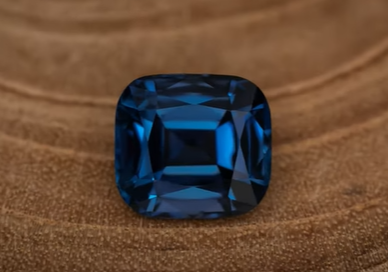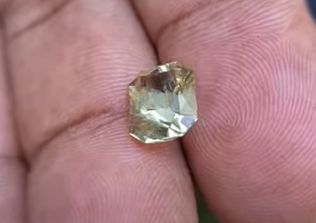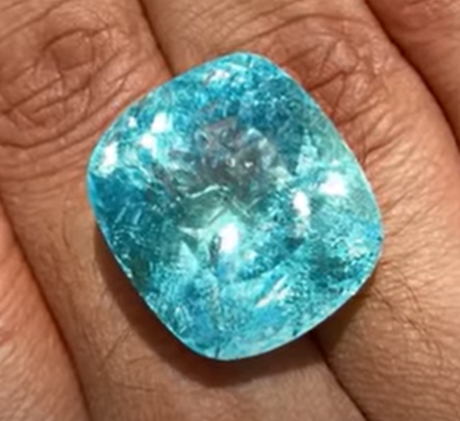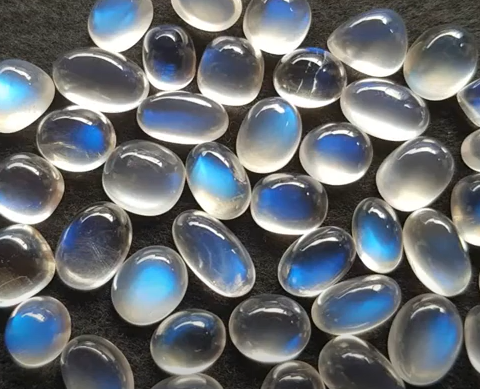Education
Ceylon Blue Sapphire
The Blue Sapphires of Sri Lanka also referred to as ‘Ceylon Sapphires’ as Sri Lankan was known during the colonial era. Sapphires from Ceylon (Sri Lanka) are world renowned for their uniqueness in Color, Clarity & Quality to shimmer in their “Cornflower Blue luster” Sapphire is a variety of corundum or aluminum oxide and Al203 gives its chemical formula—that is, two parts of Aluminum to three parts of Oxygen. The axes are arranged in a hexagonal crystal, a crystal with four axes, three of which are of equal length and intersect at 60 degree angles, and one of which is unequal in length to the others and intersects the others at a right angle. Supply and demand has dictated that cornflower blue sapphires are
the most expensive.

Sri Lanka ruby

Rubies from Sri Lanka often have pink and purple hues modifying their ruby-red hue. Many of what they consider rubies are pink sapphires by American standards. Sapphires companion variety of corundum is ruby. Rubies are red to orange-red to purplish red. Many of what they consider rubies are pink sapphires by American standards. Rubies are scientifically known as corundum, a rock-forming mineral and crystalline form of aluminium oxide which is two aluminium atoms and three oxygen atoms (Al2O3) in a close packed hexagonal structure. Corundum typically contains traces of iron, titanium, vanadium and/or chromium.
Spinel
Spinel is a mineral that owes its beautiful color to chromium, much like rubies and emeralds do. It has a hardness of 8 on the Mohs hardness scale (diamond has a hardness of 10). Spinel is seen in a wide range of colors: red, lavender, violet, blue, green, brown, black. The spinels are any of a class of minerals of general formulation AB 2 X 4 which crystallise in the cubic (isometric) crystal system, with the X anions (typically chalcogens , like oxygen and sulfur) arranged in a cubic close packed lattice and the cations A and B occupying some or all of the octahedral and tetrahedral sites in the lattice. [1][2] Although the charges of A and B in the prototypical spinel structure are +2 and +3, respectively (A 2+ B 3+ 2 X 2− 4 ), other combinations incorporating divalent, trivalent, or tetravalent cations , including magnesium, zinc, iron, manganese, aluminium, chromium, titanium, and silicon, are also possible. The anion is normally oxygen; when other chalcogenides constitute the anion sublattice the structure is referred to as a thiospinel .

Chrysoberyl

Chrysoberyl is a hard, tough, and durable gem. Although lacking the fire of other gemstones, Chrysoberyl in its various forms can be quite valuable. Most Chrysoberyl gems are yellow, though some are brown, green, or orange. Chrysoberyl is best known for its important varieties Alexandrite and Cat Eye. The mineral or gemstone chrysoberyl is an aluminate of beryllium with the formula BeAl 2 O 4. An interesting feature of its crystals are the cyclic twins called trillings. These twinned crystals have a hexagonal appearance, but are the result of a triplet of twins with each ; oriented at 120° to its neighbors and taking up 120° of the cyclic trilling. If only two of the three possible twin orientations are present, Alexandrite, a strongly pleochroic (trichroic) gem, will exhibit emerald green, red and orange-yellow colors depending on viewing direction in partially polarised light . However, its most distinctive property is that it also changes color in artificial (tungsten/halogen) light compared to daylight. The color change from red to green is due to strong absorption of light in a narrow yellow portion of the spectrum, while allowing large bands of more blue-green and red wavelengths to be transmitted. Which of these prevails to give the perceived hue depends on the spectral balance of the illumination. Fine-quality alexandrite has a green to bluish-green color in daylight (relatively blue illumination of high color temperature), changing to a red to purplish-red color in incandescent light (relatively yellow illumination). However, fine-color material is extremely rare. Less-desirable stones may have daylight colors of yellowish-green and incandescent colors of brownish red. Cymophane is popularly known as this variety exhibits pleasing chatoyancy oropalescence that reminds one of the eye of a cat. When cut to produce a cabochon, the mineral forms a light-green specimen with a silky band of light extending across the surface of the stone.
Tourmaline
Tourmaline is a fairly durable gemstone with a hardness of 7.0-7.5 on the Mohs Hardness Scale. Tourmaline gemstones can be cut into many shapes and sizes, often as faceted gems, cabochons, polished crystal slices or mineral specimens. Tourmaline is a crystalline silicate mineral group in which boron is compounded with elements such as aluminium, iron, magnesium, sodium, lithium, or potassium. Crystallography: Rhombohedral; ditrigonal-pyramidal. Crystals usually prismatic, vertically striated. A triangular prism, with three faces, prominent, which with the tendency of the prism faces to be vertically striated and to round into each other gives the crystals a cross section like a spherical triangle. Crystals are commonly terminated by base and low positive and negative rhombohedrons; scalenohedrons may be present. When doubly terminated, crystals usually show different forms at the opposite ends of the vertical axis

Garnet

Garnets are a set of closely related minerals forming a group, with gemstones in almost every color. The best colors for spessartine are vivid orange to orangy red. No eye visible inclusions present is rare for spessartine. The intense color, lack of inclusions and skillful cutting create a bright stone. Red garnet is one of the most common and widespread of gems, found in metamorphic rocks (which are rocks altered by heat and pressure) on every continent. But not all garnets are as abundant as the red ones. A green garnet, tsavorite, also occurs in metamorphic rocks, but it’s rarer because it needs unusual rock chemistries and special conditions to form. Demantoid is a rare and famous green garnet, spessartine (also called spessartite) is an orange garnet, and rhodolite is a beautiful purple-red garnet. Garnets can even exhibit the color-change phenomenon similar to the rare gemstone alexandrite. Garnets comprise a group of silicates with the general formula A 3 B 2 (SiO 4 ) 3 in which A = Ca , Fe 2+ , Mg, Mn 2+ ; B = Al, Cr, Fe 3+ , Mn 3+ , Si, Ti, V, Zr; and Si may be replaced partly by Al, Ti, and/or Fe 3+ .
Zircon
Zircon is a natural stone. It is a zirconium silicate which appears a a dark brown, green or red color after extraction and changes color when heated. Most blue stones are pastel blue, but some exceptional gems have a bright blue color. Zircon is also available in green, dark red, purple, yellow, brown and orange. Zircon is a mineral belonging to the group of nesosilicates and is a source of the metal zirconium. Its chemical name is zirconium(IV) silicate, and its corresponding chemical formula is ZrSiO 4 .

Topaz

In warm or cool tones, topaz is a lustrous and brilliant gem. Topazs reddish pleochroic color often appears at the ends of cut gems. Rich reddish orange is one of this gems most coveted colors. Topaz has the general formula Al 2 SiO 4 (F,OH) 2 and crystallizes in the orthorhombic system (point group 2/m2/m2/m and space group Pbnm).
Moonstone
Moonstone is part of the mineral family of feldspars. It ‘s anopalescent stone that can be found in colorless form as well as peach, pink, green, gray, yellow, brown, and blue. The play of light seen in Moonstone is called adularescence, and its clarity ranges from transparent to opaque.

